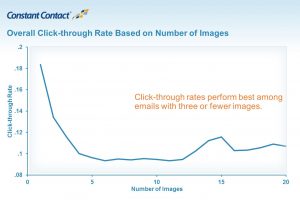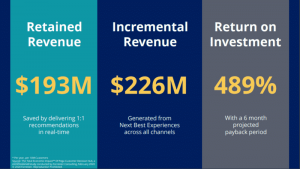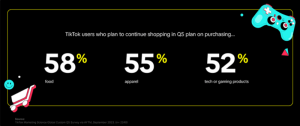As little as three years ago, the term “tick tock” simply conjured the sound of analog chronometers. But today, the term refers to a platform and a digital medium driving several of the hottest cultural trends. Now that same sound is marking off precious seconds for businesses to seize a potentially massive marketing opportunity.
But is TikTok right for your business?
With over two billion downloads and nearly a billion daily users, TikTok is a global mobile sensation that’s captured the imagination of a devoted youthful demographic while demonstrating superior engagement compared to its primary competitors (including Instagram, Facebook, YouTube, SnapChat).
TikTok’s recent shift in focus from subscription growth to monetization and marketing might also make now the time to fold this relatively new channel into your social media marketing strategy.
Before taking the plunge, it’s best to understand how TikTok differs from other social media platforms for business, its inherent strengths and weaknesses, what logistics are tied to its campaigns, and whether your business is best positioned to take advantage of it.
Table of Contents
- What is TikTok?
- What makes TikTok different and how does that affect marketing?
- Effective approaches to TikTok business marketing campaigns
- Ad types on TikTok
- Final thoughts on TikTok for business
What is TikTok?
TikTok is a video-sharing social network platform launched in 2016 by Chinese tech titan ByteDance, which burst onto the American scene after a 2018 merger with the then-popular lip-syncing app Musical.ly.
While TikTok initially remained true to its musical roots, the service quickly expanded to feature user-submitted looping video snippets (individually called “TikToks”) with durations up to sixty seconds that span virtually any topic imaginable.
The videos are formatted for phones’ vertical aspect ratio (encouraging shooting and sharing on mobile devices) and are served up by a proprietary algorithm that favors feedback over followers (fostering lower barriers to entry and a greater chance at viral engagement). The app curates a personal catalog “For You” presented in a continuous stream that can be swiped through as quickly as one’s attention span requires.
Predictably, the demographic base of TikTok skews primarily younger: 62% of its US users are under the age of 30, though the demographics are gradually shifting to incorporate an older audience.
Users are also more engaged with the app than other digital distractions, spending more time on TikTok than any rival platform save YouTube (which is impressive given the disparity in average video length).
What makes TikTok different and how does that affect marketing?
Successful marketing on social media will be kinetic, digestible, and perhaps even a bit crude in appearance and/or content. But properly managed, it can be one of the most effective strategies for marketing your small business on a small budget.
But what makes marketing on TikTok different from other social media platforms?
Some suggest TikTok has challenged its rivals by borrowing from each of their strengths: the purely video approach of YouTube, the quick-scrolling feeds of Twitter and Facebook, the native mobile environment of Snapchat and Instagram, and the personalized adaptive algorithm of Netflix finding your favorite content. Present those features with rough-hewn edges emulating the intimacy and authenticity of a chat between friends, and you have the TikTok experience.
“Don’t make ads, make TikToks” is the guidance provided by the company itself.
The young demographic that comprises TikTok’s core audience (and makes it so alluring to marketers) has grown up on digital advertising and is cynical about overt pitches, which is why the company’s marketing arm stresses that ad clients should weave genuine stories about their brands/products into the app’s natural flow.
Of course, even though the jaded audience isn’t actively shopping while scrolling TikTok feeds, we know that any online engagement is a potential purchase portal. People have become even more dependent on online shopping over the last year especially, with a full 65% of consumers dependent on online browsing for the bulk of their consumer needs.
This commercial inclination is particularly prevalent on TikTok, where over three-quarters of users frequent online shopping sites and nearly one half admit buying something seen on the app. It’s no wonder that the hashtag #tiktokmademebuyit has almost a billion views.
The great strength of TikTok as a platform and ad delivery service is the earnest, unpretentious relationship it has cultivated with users, but this can also be a minefield that dooms a clumsy marketing approach. Fortunately, we have the app, some case studies, and the experience of savvy marketing professionals to provide some guidelines.
Effective approaches to TikTok business marketing campaigns
One issue with any emerging marketing platform is measuring ROI (return on investment), and this challenge is further amplified within an organic environment like TikTok. As the company moves to prioritize advertising potential, it’s rolling out helpful new metric dashboards that can be monitored by ad partners.
With a marketing focus on connections rather than clicks or direct conversions, the bottom-line impact of even a successful campaign may be time-lagged and difficult to discern. Rather than sales numbers, most advertising efforts on TikTok are aimed at brand awareness and positive brand association that will translate to sales indirectly over time.
Indeed, where most ad networks emphasize the incorporation of a direct “Call to Action”, TikTok prefers to push the concept of a “Call to Activation” – inspiring users to join your cause and further your message instead of immediately opening their wallets.
At this time, TikTok ads do not even allow for direct sales conversions, although they are currently testing such a feature with select influencers. Given this limitation, it’s important for companies to evaluate whether they seek only direct sales or can benefit by mainstreaming their image, raising brand awareness, and connecting with potential customers for future interaction.
If such goals fit your overall marketing strategy, there are several TikTok routes to try. Just remember to integrate your TikTok advertisements with your campaigns on other social media platforms as well. In fact, failing to link social media strategies together is one of the biggest marketing mistakes that new online businesses can make in particular, because it limits the number of people who could find your business through an advertisement in the first place.
Here are a few TikTok marketing methods that have achieved results for others:
Entertaining videos
Simply creating a funny/quirky/humanizing video clip that fits TikTok’s unpolished, homemade feel is one way to get your brand noticed. Your product may feature prominently in the clip (if such placement is organic), or the subject matter can be tangentially connected to your company’s field.
For example, the Washington Post employs this approach by tasking a team to post humorous vignettes filmed in its newsroom. The posts go against the grain of serious journalism, but welcome in a whole new generation of readers (who are then casually served real news stories in the mix).
@washingtonpost Not again!!!
TikTok hashtag challenges
Perhaps the most popular and culturally relevant of TikTok guerilla tactics are hashtag challenges, a clever deployment of TikTok’s virality that turns conventional marketing on its head: simultaneously engaging the consumer and getting them to create content for you.
Hashtag challenge campaigns encourage TikTokers to post videos that incorporate promoted brands or concepts and flag the entries with a specific hashtag. Nurtured correctly, such challenges can permeate other social media channels and the pop culture psyche at large, providing free exposure along with good will.
Chipotle harnessed this technique by encouraging customers to dance with guacamole, while Mercedes challenged artists to reinvent its logo, and Guess jeans sponsored a global exhibition of personal style with its #inmydenim campaign.
Influencer assistance
“Influencer” was an unknown title (let alone a viable profession) a decade ago, but in the age of social media and reality programming, it has become an inherent part of our culture and marketing mix.
Instagram arguably fueled the rise of influencers, but TikTok has added new elements to the game. Where Instagram influencers essentially originated as models, TikTok equivalents tend to be true personalities: relatable, lively, and honest.
The use (and cost) of influencers varies depending upon the nature of one’s product and campaign goals. Marketers might choose tutorials or reviews featuring influencers demonstrating a product, or testimonials where the influencer mentions or endorses a product, or otherwise features casual product placement. Creative decisions are often ultimately left to the influencers, as all parties want the posts to mesh with their audience and their brand more than yours.
Ad types on TikTok
Entrepreneurs and companies of any size can simply create their own accounts and start posting videos, ever hopeful for a tidal wave of attention. In general, however, to avoid embarrassing flops and maximize positive potential, businesses should retain marketing advisors with digital know-how and consider experimenting with TikTok’s various ad campaign offerings.
In-feed ads
These are the most common ads and will appear within users’ feeds as they scroll. Up to fifteen seconds long with call-to-action options available, they are also the most affordable level of advertising available on TikTok.
Brand takeover
These 3-5 second images or clips are not skippable and are shown to users once-per-day when they open the app, providing wide exposure (TikTok guarantees 6M impressions) that comes at a steep cost at tens of thousands of dollars a day.
Top view
A hybrid of the previous two levels, Top View ads appear at the start of users’ feeds and can be up to 60 seconds long. Possibly the most engaging of the formats when done right, its price tag is approximately the same as the Brand Takeover.
Influencer partnerships
As discussed above, enlisting the aid of an established influencer can be very useful to help jump start any video or campaign by accessing their account’s built-in audience. TikTok influencer rates are currently less than comparable engagements on Instagram. Some influencers can be retained directly, some are represented by agencies, and TikTok itself is currently integrating influencer connections directly to its TikTok Creator Marketplace.
Branded hashtag challenge
This is the paid version of the method described earlier, and the endeavor most likely to spur community participation and gain viral attention, but also the most expensive. Though any challenge can be independently launched without platform sponsorship, this is the way to guarantee exposure.
Branded effects
Taking full advantage of the digital format, this option allows brands to share customized photo filters, virtual stickers, 2D/3D effects, and augmented reality features that engage users and prompt them to share branding elsewhere on their feed.
Final thoughts on TikTok for business
In conclusion, TikTok grants access to a coveted demographic via unique approaches in a trusted space and has demonstrated superior ad engagement and brand awareness for marketers who “get” the environment and the audience.
Social media promotion is not ideal for every business, but can provide affordable and incomparable results where there is a fit between talent, product, and audience. This is especially true with the emerging marketplace on TikTok.
Whether generating your own content for a branded channel, partnering with an influential voice as an introduction to a new consumer base, or investing advertising dollars directly with TikTok to integrate with the app, marketing professionals can use this new format to not only spark your brand but ignite it.
Digital & Social Articles on Business 2 Community
(103)
Report Post






